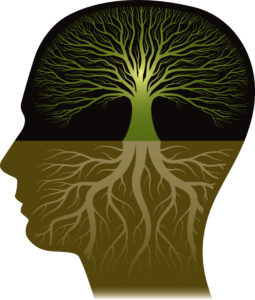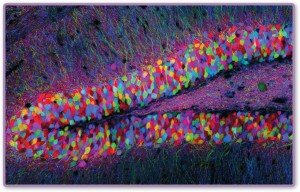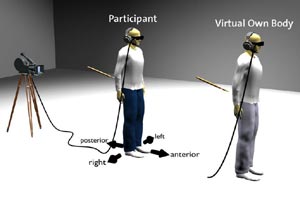 In the past year major scientific advances have shown positive effects of meditation on physical and emotional health including permanent changes in brain structures. Dramatic results include alterations in cellular DNA, and immune factors, which have begun to show possible molecular reasons for the positive effects of meditation and the brain 2013.
In the past year major scientific advances have shown positive effects of meditation on physical and emotional health including permanent changes in brain structures. Dramatic results include alterations in cellular DNA, and immune factors, which have begun to show possible molecular reasons for the positive effects of meditation and the brain 2013.
This post will first summarize the findings presented a year ago (see post “Meditation and the Brain”, June 2012) and then update the work that has occurred in the past year including some theorizing about possible mechanisms of meditation effects in the brain. There is currently little information from research about the advanced subjective states of meditation but there are now some intriguing possibilities.
 There is reason to think that the very powerful effects of meditation are related to new understanding of neuroplasticity in the brain. The old static model of the brain has been replaced with great activity—daily formation of new axons and dendrites forming synapses, and daily incorporation of newly minted neurons in new circuits of learning. Neuroplasticity is now known to occur in wide circuits throughout the brain with many different simultaneous mechanisms. The more intricate and extensive the network of brain regions involved the more powerful is the subjective experience. Combining focused concentration with breath observation, movement with yoga or Tai Chi, listening to sounds, mantras, and singing, and group activity such as moving to rhythmic music makes a much wider circuit and a much more profound experience.
There is reason to think that the very powerful effects of meditation are related to new understanding of neuroplasticity in the brain. The old static model of the brain has been replaced with great activity—daily formation of new axons and dendrites forming synapses, and daily incorporation of newly minted neurons in new circuits of learning. Neuroplasticity is now known to occur in wide circuits throughout the brain with many different simultaneous mechanisms. The more intricate and extensive the network of brain regions involved the more powerful is the subjective experience. Combining focused concentration with breath observation, movement with yoga or Tai Chi, listening to sounds, mantras, and singing, and group activity such as moving to rhythmic music makes a much wider circuit and a much more profound experience.
There are a wide variety of meditation techniques that each have effects on specific brain regions, but all of them have general effects on the regions of the brain most closely related to our sense of identity. The parts of the brain that are strengthened and modified with specific different techniques include brain circuits involving compassion, relaxation, stress reduction, and concentration.
Summary of Previous Information, June 2012:
Please see the previous post for more details on the following summary.
Compassion Meditation: Compassion meditation increased gamma oscillations and synchrony, and increased activity regions of empathy. It showed increased concentration ability, increased activity in frontal region of positive emotion and self control; increased thalamus filtering of sensory motor signals; and decreased activity in parietal regions of vision and space.
 Mindfulness Meditation: Mindfulness meditation increased the number of neurons and connections in concentration regions of right frontal cortex, insula region of emotions, and right parietal and temporal regions of sight and sound. It decreased amygdala regions of stress and increased hippocampus regions of memory.
Mindfulness Meditation: Mindfulness meditation increased the number of neurons and connections in concentration regions of right frontal cortex, insula region of emotions, and right parietal and temporal regions of sight and sound. It decreased amygdala regions of stress and increased hippocampus regions of memory.
- It showed improved ability to multitask, longer focus, better concentration, less switching, decreased stress, increased memory and equal or better productivity.
- A Chinese mindfulness meditation (IBMT) showed increase of density of axons (after two weeks) and increased myelin (after four weeks) with increased connectivity in the anterior cingulate center of focus, attention, concentration and self-regulation. This correlated with decreased stress hormones in the blood, less anxiety, depression, anger and fatigue; also, increased blood flow to cingulate cortex, lower heart rate, decreased skin conductance, decreased breathing rates, and increased belly breathing.
- In cancer patients there was less anxiety and depression.
- Navy SEALs using a mindfulness program showed decreased stress, and improvement in concentration, memory, performance of complex tasks, and regaining focus after stress
Transcendental Meditation: TM increased synchronous oscillations throughout the brain, and showed more activity in attention region of frontal and parietal brain, decrease in thalamus sensory region and basal ganglia used for choosing actions.
With teens that have high blood pressure, it showed positive heart effects, including smaller left ventricle and decreased blood pressure.
 Tai Chi: In the elderly there were increased growth factors that stimulate new brain cells. They also had increased brain volume and better memory and thinking. This was more than other forms of exercise in a comparison study.
Tai Chi: In the elderly there were increased growth factors that stimulate new brain cells. They also had increased brain volume and better memory and thinking. This was more than other forms of exercise in a comparison study.
In All Types of Meditation: The Default Mode Network (DMN) is the part of the brain thought to most closely relate to the sense of “who we are” including non-focused internal thought, daydreaming, wondering, remembering, future planning, and thinking about others. In all meditation the DMN is altered–briefly in novices and permanently in experienced meditators—to include new brain centers in dorsal anterior cingulate. This change reflected increased focus and self-monitoring of thought and emotion and increased control of behavior and thought.
- All types of meditation increase the gyrification, or folding, of the cortex, which increased with the number of years of meditation practice. This is an indication of increased brain effectiveness (gyrification is possibly a major difference between human and other animal brains).
- Compared with non meditators, research showed better ability to see subliminal and unconscious words.
- There was evidence of increased creativity with meditation and with daydreaming. With mind wandering there was better performance in association and insight tasks.
- In cancer patients there was less anxiety and depression.
- There were long-term effects on emotional stability with decreased anxiety and depression. Improvement in depression correlated with decreased hyper connectivity between the medial prefrontal dorsal cognitive and ventral emotional centers. Increased attention correlated with better synchronization in right parietal.
- In martial arts, the power was noted to be from the mental concentration not the muscles.
- Elite navy SEAL training including meditation showed more activation of the
 insula, related to awareness, pain and emotion; and increased gray matter volume and better synapses in pre frontal cortex. These practices helped relieve stress and increased awareness. Soldiers showed better biofeedback tests of muscular and neurological reactions to stress after 10 days of meditation, yoga and martial arts. They could learn a foreign language better, learn complex technical weapons systems better and were better marksmen. Another study showed that after 8 weeks of meditation soldiers more resembled SEAL and had decreased stress. This used, fMRI, blood and saliva markers.
insula, related to awareness, pain and emotion; and increased gray matter volume and better synapses in pre frontal cortex. These practices helped relieve stress and increased awareness. Soldiers showed better biofeedback tests of muscular and neurological reactions to stress after 10 days of meditation, yoga and martial arts. They could learn a foreign language better, learn complex technical weapons systems better and were better marksmen. Another study showed that after 8 weeks of meditation soldiers more resembled SEAL and had decreased stress. This used, fMRI, blood and saliva markers.
New Research in 2013
 Perhaps the most significant advances this year were in cellular genetics and immune molecular biology. Meditation showed significant effects on a large number of genes that produced striking effects on inflammatory factors. In general the results showed decreased immune inflammatory factors interleukin 6, and NF-KappaB, and an increase in the important antiviral factor IRF1. There were other studies that showed decreased inflammation with local skin burns, fewer colds and decreased stress hormones. Previous research has shown the extremely close relation of the immune and nervous systems and therefore these changes might relate to the mental properties of meditation as well.
Perhaps the most significant advances this year were in cellular genetics and immune molecular biology. Meditation showed significant effects on a large number of genes that produced striking effects on inflammatory factors. In general the results showed decreased immune inflammatory factors interleukin 6, and NF-KappaB, and an increase in the important antiviral factor IRF1. There were other studies that showed decreased inflammation with local skin burns, fewer colds and decreased stress hormones. Previous research has shown the extremely close relation of the immune and nervous systems and therefore these changes might relate to the mental properties of meditation as well.
Changes in Gene Expression and Immune Function
Gene expression changes were measured in the blood at the start of “relaxation response” meditation, just after and fifteen minutes later. Novices participated in weekly mindfulness meditation training.
Long term meditators and novices both showed epigenetic gene expression changes, with greater changes for the long term meditators. The genes that changed involved increases in energy metabolism, mitochondrial function, insulin secretion and telomere maintenance and decrease in inflammation and oxidative stress responses. Specifically mitochondrial ATP synthase and insulin (INS) were upregulated, and NF-kB pathway genes were downregulated.
These changes correlated with “mitochondrial resilience” and were surprisingly rapid. This “relaxation response” was noted by the researchers to be “opposite to the stress or fight and flight response. The study suggested a connection of meditation with mitochondria, the energy source for cells.
- In another study, Tai Chi reduced circulating levels of the inflammatory marker interleukin 6, IL-6, in older adults after 16 weeks compared to controls.
- Another study showed reduction in respiratory infections with meditators. People who started daily exercise reduced colds, but those who exercised and meditated reduced it furthers.
- Helen Lavretsky studied 45 family dementia caregivers that showed 68 of their genes responded differently after Kirtan Kriya Meditation (KKM), resulting in reduced inflammation.
- In another study yoga meditation reversed NF-kappaB and IRF related transcriptome changes in leukocytes of family dementia caregivers. Up regulated genes included immunoglobulin transcripts and down regulated increased pro inflammatory cytokines and activation related immediate early genes. The alterations were in dendritic immune cells and B lymphocytes. There was also reduced NF-kappaB signaling and increased IRF1 of innate antiviral response gene.
- High levels of cortisol are correlated with physical or emotional stress, and continuous increase can lead to many serious health problems. Measuring cortisol from saliva there was a decrease in cortisol with measures of effectiveness of mindfulness meditation during a retreat.
- Mindfulness decreases inflammation and inflammation markers. Capsaicin cream was used to produce inflammation on the skin and immune and endocrine blood tests were done to two groups, one mindfulness and a control group of walking, balancing, core training, and music therapy.
Physical Symptoms
 Reduced Heart Attack, Stroke and Death: A study published in the journal Circulation: Cardiovascular Quality and Outcomes showed that TM over a five year study decreased by 48% the risk of heart attack, stroke and death. The study followed 201 people with coronary heart disease who either (a) took a health education class promoting better diet and exercise or (b) did TM
Reduced Heart Attack, Stroke and Death: A study published in the journal Circulation: Cardiovascular Quality and Outcomes showed that TM over a five year study decreased by 48% the risk of heart attack, stroke and death. The study followed 201 people with coronary heart disease who either (a) took a health education class promoting better diet and exercise or (b) did TM
Atrial Fibrillation: . Yoga was shown to decrease atrial fibrillation. Over three months of classes patients had fewer symptoms.
Pain:
- A study proposed that the reason mindfulness increases control over pain and depression is through gaining control over sensory corticol alpha rhythms that regulate filters of pain and depressive memories. The theory is that meditators learn to control a volume knob for adjusting specific spatial brain waves. This basically allows the meditator to choose which sensations to focus on but also to avoid bias of attention caused by chronic pain. This theory is based on MEG studies showing alpha rhythms in the cortex correlate with sensory attention. Meditators where able to regulate these waves in the realm of milliseconds compared with non meditators.
- Meditation can alter how we experience pain. During a pain experiment experienced meditators felt the discomfort as intensely, but it was less unpleasant. Brain imaging showed less activity in anxiety regions for the meditators. The meditators became accustomed to the more rapidly with repeated exposure.
Parkinson’s Disease: In a comparison of Tai Chi with resistance training and stretching in Parkinson’s patients, the Tai Chi produced significantly better postural stability, gait and knee strength. There were some benefits of the other training
Brain Fatigue: “Brain fatigue”, measured by ortable EEGs, was lessened by walking in nature. While walking in urban environment there was increased arousal, attentive and frustrated. In nature the EEG’s were more meditative.
Stress and Anxiety
- Transcendental meditation significantly reduced post traumatic stress in African refugees in forty two refugees of the Congo civil war, living in Uganda. The control group did not receive training until after the study. The group that meditated had dramatic change from severe PTSD scores on PCL to within normal after 30 days. The scores of the control group showed increased symptoms during this period.
 These refugees had no home, no job and little support.
These refugees had no home, no job and little support.
- Mindfulness meditation reduced stress and depressive symptoms in children 12 to 16 years from 12 secondary schools. The research included 522 children during examinations. Eighty percent of the meditation group continued meditating after the three month study.
- Meditation and Art therapy in patients with breast cancer showed decreased stress and anxiety in eight weeks. Evaluations included cerebral blood flow changes compared with controls.
- Complementary use of tai chi augments citalopram treatment of depression in the elderly.
- The effects of meditation on emotional stability persisted even when not meditating.
Different Effects of Compassion and Mindfulness Meditation
Compassion and mindfulness meditations showed strong response to human suffering in the first, and more stability for all emotion in the latter. After eight weeks of meditation training meditators had generally reduced activity in the right amygdala by fMRI in response to emotional images when not meditating. Mindfulness, with focus on attention and awareness of breathing, thoughts and emotions, showed decrease in activation of right amygdala to all images helping emotional stability and response to stress. Compassion meditation, with focus on increasing compassion and empathy, showed decrease in positive or neutral images, but it increased with negative images showing human suffering.
Ability to Read Facial Expressions
Compassion meditation improves ability to read facial expressions through behavioral testing and fMRI. Meditators had increase in brain activity in empathy regions of inferior frontal gyrus and dorsomedial prefrontal cortex.
Mind Over Muscle
 Brain scans of karate black belts shows that the unusual power of the karate punch comes from the brain not the muscles. Using the advanced diffusion tensor MRI, which can show axons, the black belts compared with novices had white matter microscopic structural differences in the white matter of the cerebellum and the motor cortex. The correlation also included age of becoming black belt and level of experience.
Brain scans of karate black belts shows that the unusual power of the karate punch comes from the brain not the muscles. Using the advanced diffusion tensor MRI, which can show axons, the black belts compared with novices had white matter microscopic structural differences in the white matter of the cerebellum and the motor cortex. The correlation also included age of becoming black belt and level of experience.
Other General Findings
- Creativity was increased by meditation and deliberate mind wandering, even though in some ways they are opposite. Increasing mind wandering and being aware of it appeared to increase creativity. This effect is increased if a unchallenging task is done while the mind wanders.
- Mindfulness meditation temporarily altered the sense of time. It slowed down the perception of time producing the feeling that short periods of time lasted longer.
Speed of Action
 Meditation brain changes can occur in just eight weeks counteracting stress related brain alterations of increases in the amygdala (emotions, fear) and decrease in hippocampus (learning and memory); decreasing anxiety and fear; and increasing memory and cognitive abilities.
Meditation brain changes can occur in just eight weeks counteracting stress related brain alterations of increases in the amygdala (emotions, fear) and decrease in hippocampus (learning and memory); decreasing anxiety and fear; and increasing memory and cognitive abilities.
Theory of Attentional Control
An article on possible neural mechanisms of attentional control in mindfulness medition is “Neural Mechanisms of attentional control in mindfulness meditation.” This paper attempts to find how increased attention has positive effects by improving the resource allocation of brain functions.
Advanced Meditation
Since it is not possible to measure the details of subjective mental states, the unusual experiences that are reported by advanced meditators remain beyond the reach of current science. However, there are unusual scientific findings in a variety of areas that might help future directions for research into advanced meditation states–psychedelics, deep sleep, dreaming, out of body experiences, and accidental savants.
 Out of Body Experiences: Recent research has shown that using virtual reality systems, out of body experiences can be triggered in ordinary people. This finding is important because previously some scientists considered out of body experiences as psychotic. This research shows that the body consciousness can be separated from the sense of “I,” or the awareness of self. In many meditation traditions, instructions are given to reduce attachment to the body consciousness as an important technique in advanced practice. Further research now shows that out of body experiences do occur in meditation, crises, fasting, and other spiritual practices.
Out of Body Experiences: Recent research has shown that using virtual reality systems, out of body experiences can be triggered in ordinary people. This finding is important because previously some scientists considered out of body experiences as psychotic. This research shows that the body consciousness can be separated from the sense of “I,” or the awareness of self. In many meditation traditions, instructions are given to reduce attachment to the body consciousness as an important technique in advanced practice. Further research now shows that out of body experiences do occur in meditation, crises, fasting, and other spiritual practices.
 Dreaming: It is not at all clear what dreams are. Are they random mental aberrations as part of a brain cleansing that prunes synapses every night? Or, are they a coherent world of experience equivalent in some way, but quite different from, our waking consciousness. Interesting findings include the ability of some to “lucid dream,” where they learn to be conscious during dreams and influence the content and experience of dreams. Another finding is the similarity of brain states of dreaming and meditation, where the cognition is unconstrained, there is self observation, but a dampening of evaluation and controlling brain regions.
Dreaming: It is not at all clear what dreams are. Are they random mental aberrations as part of a brain cleansing that prunes synapses every night? Or, are they a coherent world of experience equivalent in some way, but quite different from, our waking consciousness. Interesting findings include the ability of some to “lucid dream,” where they learn to be conscious during dreams and influence the content and experience of dreams. Another finding is the similarity of brain states of dreaming and meditation, where the cognition is unconstrained, there is self observation, but a dampening of evaluation and controlling brain regions.
 Deep Sleep: An interesting lead in finding mechanisms for the action of advanced meditation might come from studying deep sleep. The observation that EEG patterns of advanced meditators are similar to stage IV deep sleep is intriguing, because deep sleep is noted to have major health benefits, including increased learning and less overall mortality. A state with the synergy of deep sleep that occurs during alert consciousness surely has very important properties.
Deep Sleep: An interesting lead in finding mechanisms for the action of advanced meditation might come from studying deep sleep. The observation that EEG patterns of advanced meditators are similar to stage IV deep sleep is intriguing, because deep sleep is noted to have major health benefits, including increased learning and less overall mortality. A state with the synergy of deep sleep that occurs during alert consciousness surely has very important properties.
 Accidental Savants and TMS: Advanced meditation traditions note that one result of sustained practice can be sudden increase in knowledge not otherwise known or available. Recent observation of accidental savants show that soon after various brain injuries extraordinary capacities can emerge. Speaking of brain injuries, if you know of anyone who is suffering from this and understands the Spanish language, it may be in their best interest if you point them in the direction of sites like WWW.HERRMANANDHERRMAN.COM/ESPANOL/LESIONES-PERSONALES/, where they will be able to get in touch with qualified personal injury attorneys to help them get through this one step at a time. It can be difficult, but anything is made easier with someone by your side.
Accidental Savants and TMS: Advanced meditation traditions note that one result of sustained practice can be sudden increase in knowledge not otherwise known or available. Recent observation of accidental savants show that soon after various brain injuries extraordinary capacities can emerge. Speaking of brain injuries, if you know of anyone who is suffering from this and understands the Spanish language, it may be in their best interest if you point them in the direction of sites like WWW.HERRMANANDHERRMAN.COM/ESPANOL/LESIONES-PERSONALES/, where they will be able to get in touch with qualified personal injury attorneys to help them get through this one step at a time. It can be difficult, but anything is made easier with someone by your side.
This also occurs with transcranial magnetic stimulation or TMS, which temporarily disables controlling sections of the brain. These sudden remarkable talents include advanced calculation ability, very unusual autobiographical knowledge, advanced music and art abilities. (See post). These experiences all are preceded by a change in the usual evaluative and controlling brain centers that limit activity to normal. Advanced meditation might release knowledge in the same way.
 Psychelics: A variety of meditation traditions note spiritual experiences during meditation that in some ways resembles the effects of psychedelics. These experiences include changes in body consciousness, and alterations of the experience of time and space. What is particularly striking is that recent research with psilocybin shows that most ordinary people in the study found the research experience of taking psilocybin to be one of the most profound experiences of their lives. Study also shows that many people change their lifestyle after psychedelic experiences in spiritual directions.
Psychelics: A variety of meditation traditions note spiritual experiences during meditation that in some ways resembles the effects of psychedelics. These experiences include changes in body consciousness, and alterations of the experience of time and space. What is particularly striking is that recent research with psilocybin shows that most ordinary people in the study found the research experience of taking psilocybin to be one of the most profound experiences of their lives. Study also shows that many people change their lifestyle after psychedelic experiences in spiritual directions.
 In some ways, even more intriguing are the recent fMRI findings of psychedelic experiences. While the person experiences dramatic and in some ways life changing subjective mental states, most of the important brain hubs become very silent, including cortex and sensory filtering. This very counterintuitive finding of decreased brain activity during increased mental subjective experience might be related to an experience of a deeper mind not measured by brain activity. This is reminiscent of the discussion of psychedelics opening the “doors of perception,” a phrase originally related to spiritual experience.
In some ways, even more intriguing are the recent fMRI findings of psychedelic experiences. While the person experiences dramatic and in some ways life changing subjective mental states, most of the important brain hubs become very silent, including cortex and sensory filtering. This very counterintuitive finding of decreased brain activity during increased mental subjective experience might be related to an experience of a deeper mind not measured by brain activity. This is reminiscent of the discussion of psychedelics opening the “doors of perception,” a phrase originally related to spiritual experience.
Meditation and the Brain 2013
Meditation practice appears to have many major positive physical and mental effects. Meditation practice trains a specific muscle for mental concentration stimulating increased memory, creativity and cognitive abilities. The relaxation produces deep physiological effects on genes, inflammation and cellular metabolism. The recent studies on inflammation and immune function begin to tackle the important question of how the positive health and psychological effects of meditation occur. Because of the strong connection between the immune and nervous systems, this data might begin  to also explain the subjective mental affects as well.
to also explain the subjective mental affects as well.
Advanced meditation states appear to have even greater benefits in most of these studies. Also, unusual subjective mental experiences during advanced meditation can have great spiritual impact and can be life changing.
It is an exciting time to be studying meditation and the brain 2013. Hopefully, research techniques in the future will continue to advance explanations for meditation’s remarkable effects.

